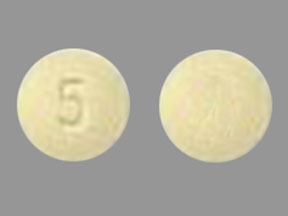Generic Belsomra Availability
Last updated on Mar 13, 2025.
Belsomra is a brand name of suvorexant, approved by the FDA in the following formulation(s):
BELSOMRA (suvorexant - tablet;oral)
-
Manufacturer: MERCK SHARP DOHME
Approval date: August 13, 2014
Strength(s): 5MG [RLD], 10MG [RLD], 15MG [RLD], 20MG [RLD]
Is there a generic version of Belsomra available?
No. There is currently no therapeutically equivalent version of Belsomra available in the United States.
Note: Fraudulent online pharmacies may attempt to sell an illegal generic version of Belsomra. These medications may be counterfeit and potentially unsafe. If you purchase medications online, be sure you are buying from a reputable and valid online pharmacy. Ask your health care provider for advice if you are unsure about the online purchase of any medication.
See also: Generic Drug FAQ.
Related patents
Patents are granted by the U.S. Patent and Trademark Office at any time during a drug's development and may include a wide range of claims.
-
Solid dosage formulations of an orexin receptor antagonist
Patent 10,098,892
Issued: October 16, 2018
Inventor(s): Harmon Paul A. & Variankaval Narayan
Assignee(s): Merck Sharp & Dohme Corp.The present invention is directed to a pharmaceutical composition comprising the compound suvorexant, or a pharmaceutically acceptable salt thereof, a concentration-enhancing polymer, and optionally a pharmaceutically acceptable surfactant. The concentration-enhancing polymer is a polymer that forms an amorphous dispersion with suvorexant, that is insoluble or almost completely insoluble in water by (a) dissolving the suvorexant or (b) interacting with the suvorexant in such a way that the suvorexant does not form crystals or crystalline domains in the polymer. A concentration-enhancing polymer is water soluble or readily disperse in water, so that when the polymer is placed in water or an aqueous environment (e.g. fluids in the gastrointestinal (GI) tract or simulated GI fluids), the solubility and/or bioavailability of suvorexant is increased over the solubility or bioavailability in the absence of the polymer.
Patent expiration dates:
- May 29, 2033✓
- May 29, 2033
-
Solid dosage formulations of an orexin receptor antagonist
Patent 11,980,623
Issued: May 14, 2024
Inventor(s): Harmon; Paul A. et al.
Assignee(s): Merck Sharp & Dohme LLC (Rahway, NJ)The present invention is directed to a pharmaceutical composition comprising the compound suvorexant, or a pharmaceutically acceptable salt thereof, a concentration-enhancing polymer, and optionally a pharmaceutically acceptable surfactant.
Patent expiration dates:
- May 29, 2033✓
- May 29, 2033
-
Substituted diazepan orexin receptor antagonists
Patent 7,951,797
Issued: May 31, 2011
Inventor(s): Breslin; Michael J. et al.
Assignee(s): Merck Sharp & Dohme Corp. (Rahway, NJ)The present invention is directed to substituted diazepan compounds which are antagonists of orexin receptors, and which are useful in the treatment or prevention of neurological and psychiatric disorders and diseases in which orexin receptors are involved. The invention is also directed to pharmaceutical compositions comprising these compounds and the use of these compounds and compositions in the prevention or treatment of such diseases in which orexin receptors are involved.
Patent expiration dates:
- November 20, 2029✓✓✓
- November 20, 2029
More about Belsomra (suvorexant)
- Check interactions
- Compare alternatives
- Pricing & coupons
- Reviews (539)
- Drug images
- Side effects
- Dosage information
- During pregnancy
- FDA approval history
- Drug class: miscellaneous anxiolytics, sedatives and hypnotics
- Breastfeeding
- En español
Patient resources
Professional resources
Related treatment guides
Glossary
| Term | Definition |
|---|---|
| Drug Patent | A drug patent is assigned by the U.S. Patent and Trademark Office and assigns exclusive legal right to the patent holder to protect the proprietary chemical formulation. The patent assigns exclusive legal right to the inventor or patent holder, and may include entities such as the drug brand name, trademark, product dosage form, ingredient formulation, or manufacturing process A patent usually expires 20 years from the date of filing, but can be variable based on many factors, including development of new formulations of the original chemical, and patent infringement litigation. |
| Drug Exclusivity | Exclusivity is the sole marketing rights granted by the FDA to a manufacturer upon the approval of a drug and may run simultaneously with a patent. Exclusivity periods can run from 180 days to seven years depending upon the circumstance of the exclusivity grant. |
| RLD | A Reference Listed Drug (RLD) is an approved drug product to which new generic versions are compared to show that they are bioequivalent. A drug company seeking approval to market a generic equivalent must refer to the Reference Listed Drug in its Abbreviated New Drug Application (ANDA). By designating a single reference listed drug as the standard to which all generic versions must be shown to be bioequivalent, FDA hopes to avoid possible significant variations among generic drugs and their brand name counterpart. |
Further information
Always consult your healthcare provider to ensure the information displayed on this page applies to your personal circumstances.

